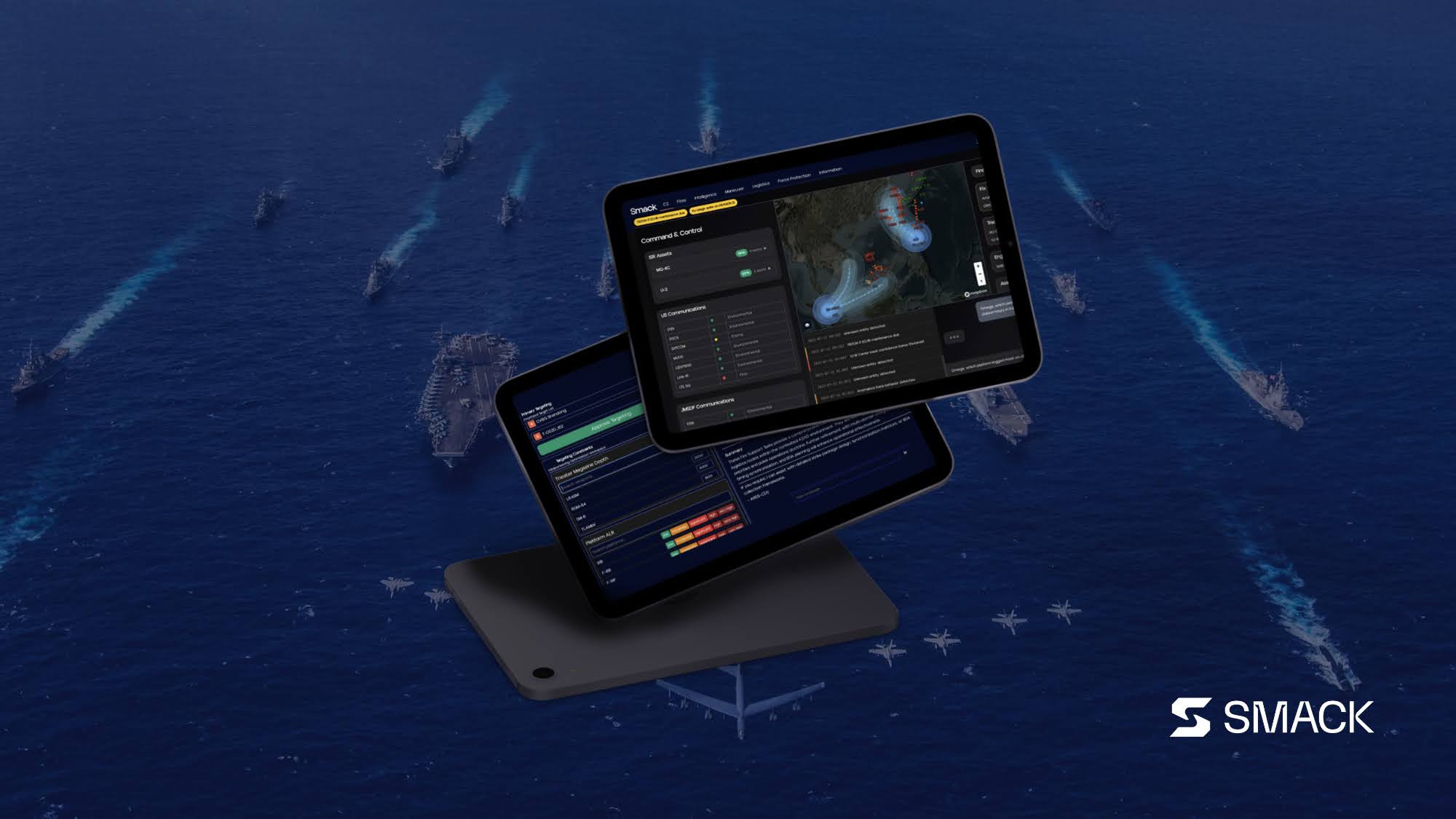Beyond wargames: From simulation to synthetic warfare generation
Discover how Smack's deep reinforcement learning enables a new frontier of synthetic warfare generation.

The world has never faced a war on the scale that a potential WWIII would represent.
Past conflicts were either limited in scope or fought in the analog age, without the unpredictable influence of AI-enabled decision making. Historically, militaries have trained to fight the last war — a pattern that leads to poor initial performance until hard-earned lessons drive adaptation. The U.S. and its allies cannot afford such a learning curve.
Today we face a new problem: how do we proactively prepare for a conflict in a world with ubiquitous AI, abundant data, and emerging peer competitors intent on challenging the status quo?
The limited data available from decades of 20th century conflicts — global wars, policing actions, limited/necessary fights, counterterrorism, and counterinsurgency — is insufficient to prepare for that future fight. Worse, despite spending on military simulations surging to $26 billion annually, traditional wargames cannot capture the exponential complexity of modern warfare.
A new paradigm is needed — one capable of rapidly generating and analyzing millions of scenarios, including those never before encountered. Such a system must integrate not only clearly defined parameters like platforms, weapons, and sensors but also ambiguous variables like temporal sequences, conditional dependencies, and operational constraints.
The Combinatorial Explosion Problem
Imagine a hypothetical future scenario:
Coalition forces in the Pacific are projecting power from halfway across the globe to deny an adversary’s bid to impose despotic regional dominance. They face a peer with 10,000 drones and autonomous systems deployed across millions of square miles of contested airspace, while simultaneously navigating cyber attacks and misinformation campaigns. How do you forecast an adversary’s actions in advance, weigh the consequences of every move — or failure to act — against a broader campaign, and ensure coalition efforts remain aligned within a comprehensive global strategy?
This is what’s known as an “intractable” scenario space: one that’s mathematically impossible to explore through traditional exercises due to the extreme difficulty of capturing what happens between all systems simultaneously, from every perspective — including the adversary's.
Consider RIMPAC 2024, the world’s largest naval exercise. The five-week event involved 200 surface ships, submarines, and aircraft, as well as 25,000 personnel from 29 countries, yet was only able to explore a handful of scenarios—at an estimated cost of up to $500 million USD. Wargaming simulations seek to reduce the need for such costly live events, but they too remain constrained by the exponential combinations of platforms, domains, and decisions that define modern conflict.
Whichever way you look at it, the math is prohibitive. Coordinating exercises with dozens of coalition partners is too cumbersome and expensive to adequately prepare for autonomous system-enabled warfare, and simulations can only explore narrow slices of an exponentially complex battlespace.
The Solution: Smack’s Synthetic Warfare Generation
Deep reinforcement learning allows synthetic environments to remain relevant in real time, effectively enabling continuous wargaming during the campaign itself. This is exactly why we built Alpha and Omega, our core product suite.
Omega is our command-level intelligence engine. It uses proprietary deep-RL models trained on high-fidelity physics-based simulations to navigate the combinatorially explosive scenario space of modern warfare, discovering relationship patterns between thousands of entities that real exercises can’t reveal due to safety, cost, and physical constraints.
This is much more than traditional wargaming — it’s the new frontier of synthetic warfare generation. Omega uses tens of thousands of specialized agents to model the collective intelligence that emerges when war agents, sensors, and weapons interact across the battlespace. The patterns we discover in these synthetic engagements transfer to operational reality because we're not learning specific sensor signatures. Instead, we're learning the mathematical structures of how warfare systems interact, deceive, and adapt.
Combined with Alpha's edge execution capabilities, which gives warfighters and squad leaders a compact version of Omega's decision-making intelligence even when comms and compute are limited, this represents a paradigm shift in military preparedness. Alpha and Omega create a continuous learning ecosystem. With every synthetic engagement, we become exponentially smarter as we discover new patterns that improve our next generation’s tactical creativity which then becomes training data for even more complex scenarios.
This isn’t a database that grows linearly — it's an engine that compounds its advantage over time to evolve faster than any adversary can adapt and ensure Decision Dominance across the kill chain.
Putting Synthetic Warfare to Work
Smack’s core product suite doesn’t just plan for what we know might happen, it discovers what we don’t know could happen and prepares for that as well—and it’s doing it now. We’ve already won contracts with both the JFN and MCWL to put synthetic warfare generation to work in real operational contexts.
For JFN, we’re developing a Predictive ISR capability built on Omega that synchronizes sensor collection with long-range fires planning and battle damage assessment, using machine-to-machine orchestration and multi-INT data fusion (EO, SAR, ELINT). The system learns from millions of synthetic scenarios where we know exactly what each sensor saw, what was hidden, and how deception propagated through the battlespace.
For MCWL, we’re leveraging Omega to support campaign-level decision-making through generative AI, 4D operational simulations, and proprietary models for weaponeering, aerial refueling, and SEAD. Each simulation captures not just outcomes, but the complete interaction dynamics between all systems—data that has never been available from real exercises or historical conflicts.
To learn more about Alpha, Omega, and synthetic warfare generation, visit our Contact Page and schedule a demo here.

